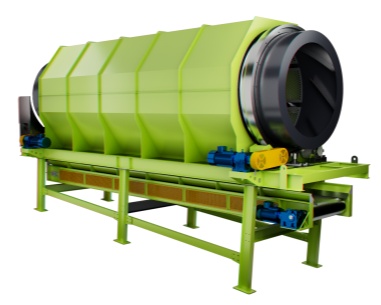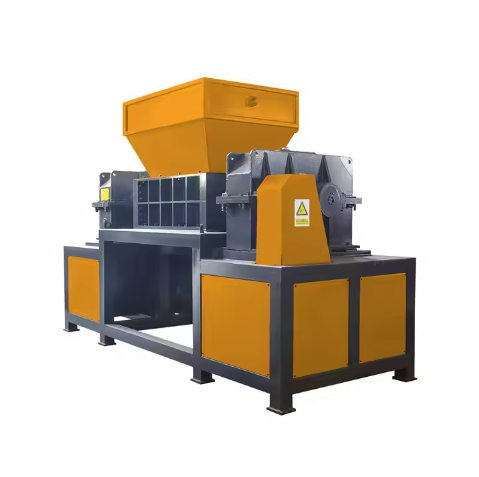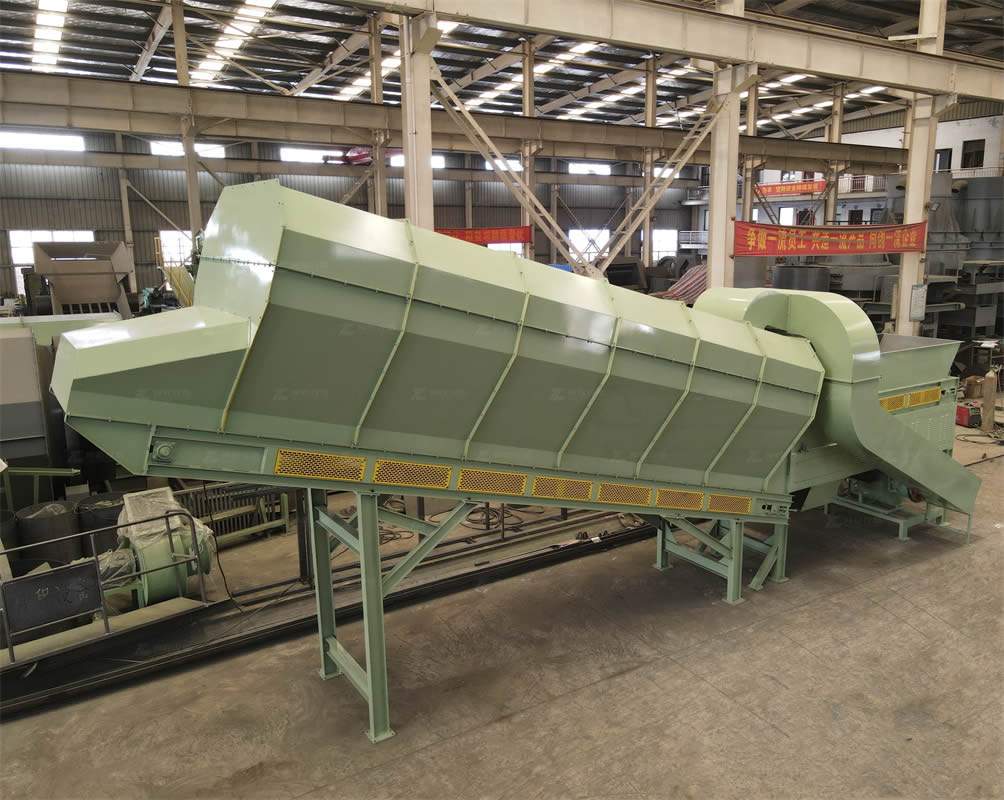Future research and development direction of double-shaft shredders
Future research and development direction of double-shaft shredders
The research and development direction of double-shaft shredders in the future will focus on improving equipment performance, enhancing environmental protection characteristics and meeting increasingly stringent regulatory requirements. Specifically, research and development work may focus on the following aspects:

Improving durability and energy efficiency:
R&D will continue to focus on improving the durability and energy efficiency of double-shaft shredders. For example, by adopting new materials and technologies to extend the service life of key components such as knives and reduce energy consumption. The application of nanomaterials is an important area of exploration, which can help manufacture more wear-resistant and corrosion-resistant components, thereby reducing maintenance costs and improving overall work efficiency1.
Intelligent control system integration:
With the development of the concept of Industry 4.0, intelligent control technology will be more widely used in double-shaft shredders. This includes but is not limited to the function of automatically adjusting the shredding speed and force, so that the machine can automatically optimize the operating parameters according to different types of materials, thereby achieving the best processing effect. In addition, remote monitoring and diagnostic systems can also help users better manage the operating status of the equipment, detect potential problems in time and take preventive measures4.
Green and low-carbon design:
In response to the global concern for environmental protection, future double-shaft shredders need to pay more attention to the design concept of green and environmental protection. On the one hand, dust emission and noise pollution can be reduced by improving the crushing process and structural design; on the other hand, it is possible to explore how to effectively utilize resources such as waste heat generated during the crushing process to achieve the goal of energy conservation and emission reduction4.
Expand the scope of application:
Further expand the application scenarios of double-shaft shredders on the existing basis, especially in the fields of waste electronic product processing and organic waste conversion to find new growth points. As the demand for environmental protection equipment grows in developing countries, these regions may also become important market opportunities1.
Adapt to changes in strict standards:
Changes in environmental protection regulations directly affect the development of the double-shaft shredder market. Therefore, manufacturers must keep up with policy trends to ensure that new products meet or even exceed the latest environmental and safety regulations. This means not only paying attention to the performance indicators of the product itself, but also considering the influencing factors throughout the life cycle, such as the selection of raw materials, production process flow, etc.1.
Modular design and customized services:
Provide more flexible and diverse solutions to meet the needs of different customers. By introducing the concept of modular design, double-shaft shredders can be easier to upgrade or modify, and it is also convenient to provide personalized configuration options according to specific application scenarios. This flexibility not only helps to improve customer satisfaction, but also creates more added value for enterprises4.
In summary, facing the dual pressures of environmental protection and resource recycling, the double-shaft shredder market is expected to continue to maintain its growth trend. Technological progress and innovation will be the key factors driving the development of the industry. Investors should pay close attention to market dynamics and grasp the development of the industry to achieve sustainable development and investment returns.
| Model | 600 | 800 | 1000 | 1200 | 1400 | 1600 | 1800 |
| Motor(kw) | 11*2 | 18.5*2 | 35*2 | 45*2 | 55*2 | 75*2 | 110*2 |
Reducer | P6-P7 | P7-P8 | P8-P10 | P10-P12 | P11-P13 | P12-P16 | P14-P16 |
| Siemens or other motors, planetary reducers or other reducers can be customized according to customer requirements | |||||||
| Rotation Speed | 8-20rmp | 8-20rmp | 8-15rmp | 8-15rmp | 8-15rmp | 8-12rmp | 8-12rmp |
| Blades Diameter | 220-320 | 260-320 | 260-400 | 400-500 | 400-500 | 500 | 500 |
| Blades material | The material of the blades (55sicr, 5crsi, 9crsi, skd11, m6v, h13) can be customizedaccording to the customer's actual usage | ||||||
| Feeding Size | 1200*900mm | 1400*1000mm | 1600*1200mm | 1800*1300mm | 2000*1300mm | 2200*1700mm | 2400*2000mm |
| The size and appearance of the feeding hopper can be customized according to thecustomer's feeding situation | |||||||
| Weight(kg) | 1800 | 2500 | 3700 | 5500 | 7500 | 9500 | 13000 |
-
 Trommel screenTrommel screen, also known as drum screens, are widely used in various industries for sorting and separating materials.Get Quote
Trommel screenTrommel screen, also known as drum screens, are widely used in various industries for sorting and separating materials.Get Quote -
 Crop straw double shaft shreddApplications:Biomass Energy Production: Shredded straw can be used as a feedstock for bioenergy plants to produce electricity or heat.Livestock Feed: Reduced-si...Get Quote
Crop straw double shaft shreddApplications:Biomass Energy Production: Shredded straw can be used as a feedstock for bioenergy plants to produce electricity or heat.Livestock Feed: Reduced-si...Get Quote -
 Zhongcheng Air Drum SeparatorAir drum separators effectively separate lightweight materials (e.g., plastics, paper) from heavier materials (e.g., metals, glass). This high efficiency is cru...Get Quote
Zhongcheng Air Drum SeparatorAir drum separators effectively separate lightweight materials (e.g., plastics, paper) from heavier materials (e.g., metals, glass). This high efficiency is cru...Get Quote
-
2024-05-29Landfill stale garbage screening projectAfter communicating with our domestic customers in Shandong Province, we learned that he needed to dispose of the garbage in the landfill through excavation, sc...
-
2024-06-20Wind Separator Technology for Lightweight Materials in Urban Solid Wastewind separator, also known as air separation, is a sophisticated and efficient method of sorting that utilizes air as the separating medium.
-
2024-08-22Medical waste shredderWorking Principle:Feeding Mechanism: Medical waste is fed into the shredder through a hopper or chute. The feeding mechanism ensures that the waste is introduce...
-
2024-08-28Scrap rubber product shredderThe shredder of waste rubber products not only helps to reduce environmental pollution, but also improves the reuse rate of waste rubber, which is one of the im...
-
2024-04-13Wobbler FeederWobbler feeder is a type of feeding equipment that uses rotating elliptical bars, known as wobblers, to separate materials based on size and type before they re...



